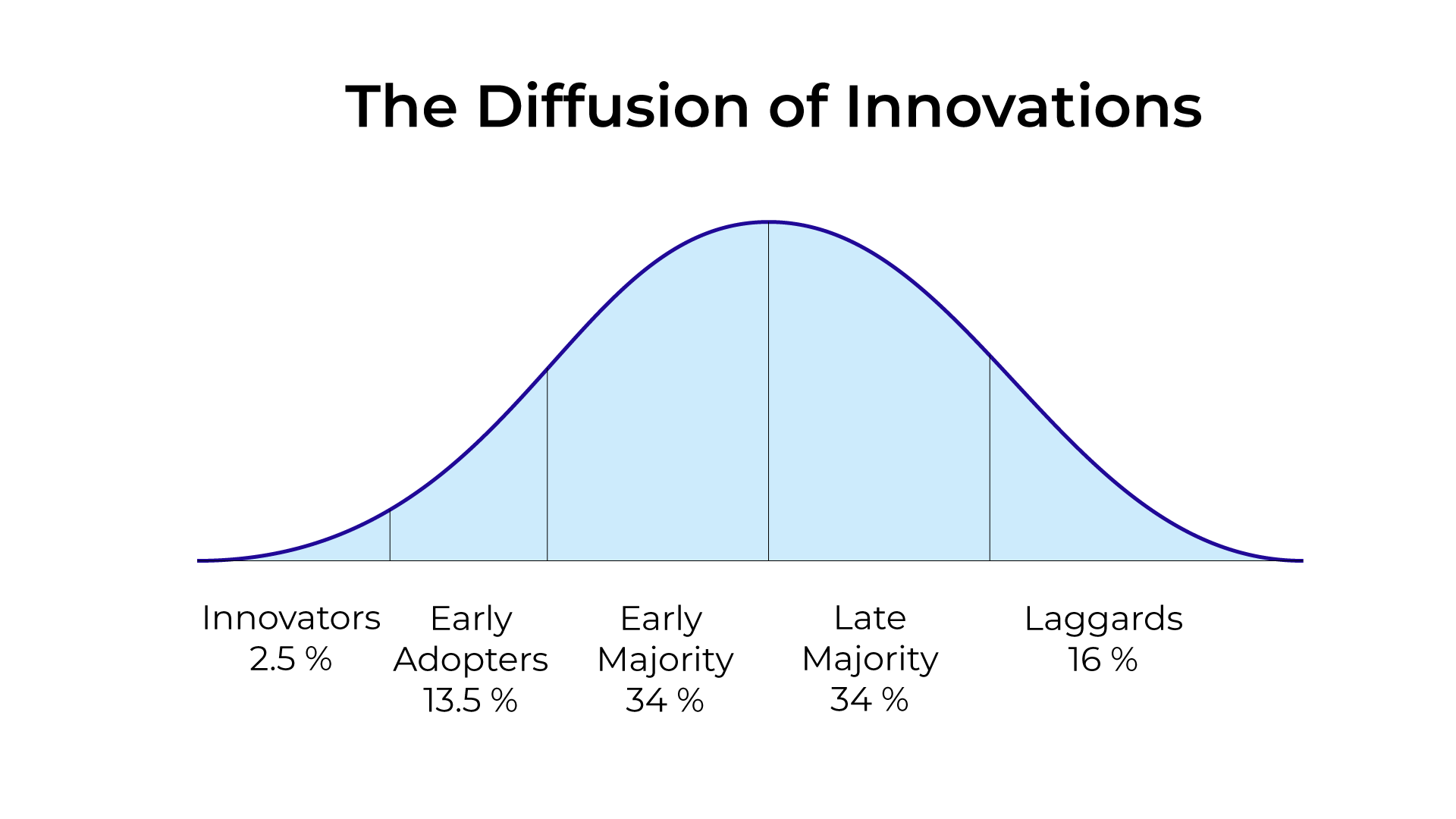Since the 1980s, the AEC sector has seen several technological breakthroughs, including CAD, the Internet, BIM, and, more recently, AI. Their introduction and implementation have followed the “diffusion of innovations” model quite well.
I’ve been privileged to work with companies in the Innovators and Early Adopters categories: architects, engineers, consultants, contractors, and software developers alike.
Being early in the game doesn’t guarantee success, but the companies I’ve worked with or consulted for mostly did exceptionally well. The question is: why and how?

It starts with visionary leadership
Without exception, all the high-flyers had a founder or a person in a leadership position with a clear strategic business vision. They envisioned growth beyond the industry’s status quo and understood how emerging technology could help realize that vision.
Such leaders recognize that new technology is initially limited, perhaps even flawed, but see its transformative potential. They commit early and stay the course. As Arnold Schwarzenegger said, “Forget Plan B. Focus on Plan A.”
Communication and empathy are equally crucial. Visionaries must inspire teams, partners, and clients, even in the face of resistance. One of my clients’ managers once said, “Our CEO has these controversial ideas we don’t initially buy, but most often, he proves to be right.”
Supported by a skillful and enthusiastic team
Technology must be pulled into a company, not pushed in from the outside. That requires a few passionate individuals who “get it” and are eager to make it work.
As a newly graduated architect, I joined a Nordic firm pioneering CAD. Although I had no computer experience, I’d dabbled in electronics and was eager to learn. Our small team had to master the software in a few days and deliver real work immediately.
I’ve seen the same spirit in every successful company I’ve worked with.
Doing real things that create concrete results
Small AEC firms can’t afford extensive R&D—they need real use cases. Ideally, these address an unmet need or a task that is too slow or costly with conventional methods.
One early success was with a large property owner who needed to classify and calculate building areas for internal rents. With their encouragement, I developed a novel GIS-based property management system despite having no prior experience in GIS. The project’s ROI validated the effort.
Scaling for real business impact
Initial wins must lead to broader adoption. That requires relentless support, listening to feedback, and continuous improvement. It is essential to have and support champions within the company.
Every technology has rough edges. The trick is to fix them fast and proactively. What starts as an experiment must evolve into a systematic way of working.
The real competitive advantage emerges when the tech is turned into a process that reliably delivers exceptional results.
Fostering a culture of experimentation
When the Web emerged, I immediately recognized its potential. I learned HTML and launched one of the first home pages in the industry.
At that time, we were partners in a European architectural group. My initial attempts to explain to other partners why the Web would transform our marketing and business practices were unsuccessful. Regardless, our company pushed forward, utilizing the Internet for collaboration and demonstrating to other, more conservative partners that the Web was indeed a game-changer.
I have observed that companies that encourage experimentation often discover innovative ways to utilize new technologies that are not immediately apparent. This cultural mindset turns trial and error into a strategic advantage.
The same pattern is now repeated with AI. Visionary leaders and small, nimble teams are already proving its value in planning, estimation, and operational insights.
Driving industry-wide change starts with one
In a project-based, highly networked industry like construction, no company innovates in isolation. For new technologies to deliver their full value, adoption must eventually reach trade partners, consultants, and clients.
One committed company, regardless of its size, can ignite a transformation. Whether by sharing new processes, co-developing digital workflows, or simply proving what’s possible, a single visionary firm can influence the wider ecosystem.
Industry change rarely starts from the top down; it spreads peer-to-peer, project-by-project. That’s why bold early movers matter more than ever.
We often wait for the industry to change. But maybe the next big leap starts with your team, on your next project. What’s stopping us?
View the original article and our Inspiration here


Leave a Reply